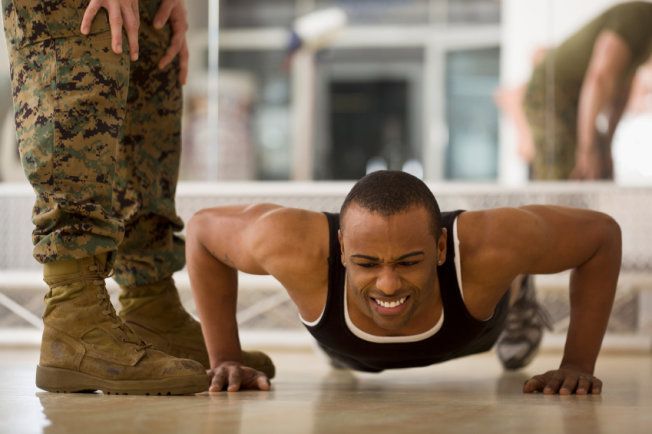
Barefoot exercise is an alternative way to getting in shape. Barefoot training is a great alternative to traditional gym training. However, there are also some disadvantages. We'll discuss the drawbacks and precautions as well as the benefits. After you've gained a better understanding of the new way to exercise, you can start your training program barefoot. Just remember to start slowly, with light weights and proper movement patterns, and work your way up.
Benefits
Barefoot exercises have many benefits. For one thing, it allows for greater sensory feedback to the nervous system, which is important for the proper functioning of the body's stabilizing muscles. It can also improve balance and posture. There are also many benefits to exercising barefoot that go beyond convenience. Here are three. 1. Better results. In order to prevent injury, you can use your feet as leverage.
Another benefit of exercising barefoot is improved body awareness and balance. The feet contain peripheral nerves that send signals to the brain. If these nerves are damaged, your body might have difficulty controlling its muscles or staying straight. Running barefoot helps improve balance and proprioception. You will feel more sensation between your toes. This prevents injury and increases your body's ability adapt to stress.

Drawbacks
While there are many advantages to being barefoot, it is also a great way to exercise. There are also some disadvantages to training barefoot. You might feel uncomfortable while you are adjusting to barefoot training. It is possible to feel uncomfortable when performing lifts or other activities that require you to wear shoes. The benefits outweigh any disadvantages.
The first drawback to barefoot exercise is the risk of injury, especially for the second metatarsal, which is vulnerable to injury. If you have worn shoes your whole life, you may want to consider going barefoot for yoga or other activities. To prevent sprains and fractures, you may also consider purchasing barefoot tape or stick on soles. Keep in mind, however, that not all gyms require you to wear shoes.
Be aware
Barefoot exercises can be fun and healthy. However, it's important to remember to protect your feet from injury. Barefoot exercise can improve balance and posture and increase stability. Barefoot exercises can prove dangerous if they are stepped on by a sharp object or lifted heavy objects. A podiatrist, physical therapist or specialist in running shoes can help you determine if going shoeless might be right for you.
If you plan on going barefoot for your workout, make sure to wear shoes while adding weights to your routine. It's the same for removing weight that you have already added. Additionally, you should always wear a safety collar to protect your feet from slipping weight plates. If you're unsure of whether or not you should go barefoot, start with light activities, such as brisk walking around the house.

How to go barefoot
While most fitness experts agree that going naked is a good idea, it depends on the type and intensity of your workout. A shoe that mimics barefoot running is better than one with a high-heeled sole if you are going to run a marathon. It's also important to think about how comfortable it is going barefoot.
Barefoot exercise has one major advantage: it increases proprioception. This helps the body to understand where it is in space. To be able to coordinate, balance, and stabilize your body in space, you need to be able to sense where it is. Barefoot training will improve your awareness of your body and make you feel stronger and more healthy. You can improve your proprioception by doing barefoot paddleboarding or swimming barefoot.
FAQ
What happens if I don't get enough sleep?
If you don't get enough sleep, your brain doesn't receive the signals needed to regulate hormones and chemicals in regulating appetite and metabolism. In turn, this can cause you to eat more and gain weight. Overeating can also be caused by a lack of sleep.
Which is more important: Exercise, diet, or sleep?
This depends on what you're trying to achieve. If you want to lose weight, diet is the most important factor. For building muscle mass, exercise is key. Finally, sleep is the least important factor since it only affects how well you perform during the day.
Can I exercise after eating?
It depends on what type of exercise you're performing. Avoid strenuous exercise after meals as it can cause stomach cramps. Light aerobic activities such brisk biking and walking are better.
Statistics
- Adolescent girls were less active than adolescent boys, with 85% vs. 78% not meeting WHO recommendations of at least 60 minutes of moderate to vigorous intensity physical activity per day. (who.int)
- Physical activity confers the following maternal and fetal health benefits: a decreased risk of pre-eclampsia, gestational hypertension, gestational diabetes (for example, 30% reduction in risk) (who.int)
- An estimated 110,000 deaths per year could be prevented (cdc.gov)
- Globally, 81% of adolescents aged 11-17 years were insufficiently physically active in 2016. (who.int)
External Links
How To
How to motivate you to exercise regularly
A fitness plan is a set or sequence of exercises that are done regularly for a particular time. It helps people build muscle mass and tone their bodies. Regular exercise improves cardiovascular health, blood pressure, cholesterol, risk of heart disease, stroke, diabetes, anxiety, stress and obesity, as well as other diseases like depression, anxiety and osteoporosis. In addition to these benefits, regular exercise provides psychological benefits such as self-esteem, confidence, mood, energy level, sleep quality, and social interactions.
Why do you want to follow your own fitness routine?
You can lose weight and improve your health by following a workout routine. What makes a fitness routine so important? Let's find out!
What does it mean to follow a fitness routine?
It is a form of physical activity that involves running, biking, swimming or other forms of martial arts at least 3 times per week. You don't necessarily have to spend hours doing this; just 30 minutes of exercise is enough to burn calories and keep you healthy. You must stick to your plan. If you miss a day here and there, don't worry--just pick up where you left off next time.
How much time should I dedicate to my health and fitness?
The amount of time depends on how busy you are. A moderate workout takes 20-30 minutes. Begin slowly with just five to 10 minutes if this is your first time exercising. Gradually increase the time until you feel comfortable.